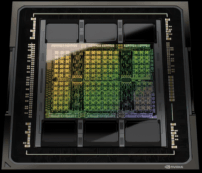The modern data-driven economy is more reliant on data centers than ever before. Amidst our planet’s critical environmental crisis, a re-evaluation of data centre infrastructure and its contribution to the climate problem is necessary. For example, a 2016 study projected data centre emissions to reach 3.2% of global CO2 emissions by 2025. That number is expected to double by 2040 in tandem with ever-increasing worldwide internet penetration rates. While figures may differ depending on various factors, servers may account for up to 26% of data centre energy consumption, as shown below.


Source: Dayarathna et al., (2016), GoClimate.
From manufacture to disposal, the lifecycle of a server is not a particularly green journey. Most studies on server lifecycle management (LCM) have typically focused on energy usage and waste, with little or no attention paid to the manufacturing and deployment phases which may account for up to a fifth of total server energy use. Exacerbating this problem is the fact that most proposed solutions to the consumption and waste challenge have generally converged around alternative energy sources, efficient cooling systems, and data virtualisation. We believe that consolidating underutilised servers via spare capacity recycling (SCR) will significantly increase efficiency, reduce waste, lower procurement costs, and meet environmental goals.
Learn more: CUDO Compute at the edge: combining the strengths of blockchain and decentralised architectures.
Server under-utilisation
A 2014 report by the Natural Resources Defense Council (NRDC) puts the average server utilisation estimate between 12-18%. While this figure has improved, server utilisation remains low across data centers. Outside peak hours, servers remain largely idle or unused, leading to avoidable e-waste. A feasible solution is to recycle spare compute capacity on a global network where workload demand can be distributed across the network.

Blockchain-enabled SCR
While server recycling has been widely regarded as the next major stride towards a more sustainable compute/storage ecosystem, our unique approach, which integrates blockchain technology to create a vast distributed computing network, is novel. Placing this model on a blockchain guarantees transparency, openness, and compliance with environmental targets. In addition, the integration of edge computing architecture will enable the provision of a low-latency and highly scalable compute solution for corporate and individual use as servers will be situated close to end-users.
Achieving sustainability via spare-capacity recycling
Adequate lifecycle management requires usage optimisation, recycling, and accountability. Given current server underutilisation stats, we envision the possibility of increasing utilisation by an additional 20% per server. Achieving utilisation anywhere near that figure will effectively eliminate the need for one-sixth of procured servers, thus reducing energy consumption associated with the manufacturing and transportation processes.

Learn more: Cudos partners with play-to-earn platform Cornucopias on dynamic NFTs
Idle hardware monetisation
Our spare-capacity recycling model creates an economic incentive that ultimately redistributes cloud computing revenue. While this article has focused almost exclusively on servers, a wide range of hardware/devices can feasibly take on compute workloads on our network. These could range from CPUs and GPUs to PCs, video-game consoles, mobile devices and more. For example, statistics show the global weekly hours spent playing games is in single digits, meaning that idle hardware monetisation holds immense potential for owners of GPUs and video-game consoles.
Join our pilot phase
Our pilot test will help you validate your hardware compatibility prior to deployment. As a buyer, you’ll receive free compute for a specified period in exchange for assisting us in optimising the platform before its rollout later this year. By partnering with us, you join us to create a more sustainable planet. Our ecosystem continues to expand rapidly, and we’d love to collaborate with you whether you are interested in buying or selling spare compute.
About CUDO Compute
CUDO Compute is a fairer cloud computing platform for everyone. It provides access to distributed resources by leveraging underutilised computing globally on idle data centre hardware. It allows users to deploy virtual machines on the world’s first democratised cloud platform, finding the optimal resources in the ideal location at the best price.
CUDO Compute aims to democratise the public cloud by delivering a more sustainable economic, environmental, and societal model for computing by empowering businesses and individuals to monetise unused resources.
Our platform allows organisations and developers to deploy, run and scale based on demands without the constraints of centralised cloud environments. As a result, we realise significant availability, proximity and cost benefits for customers by simplifying their access to a broader pool of high-powered computing and distributed resources at the edge.
Continue reading

High-performance cloud GPUs
